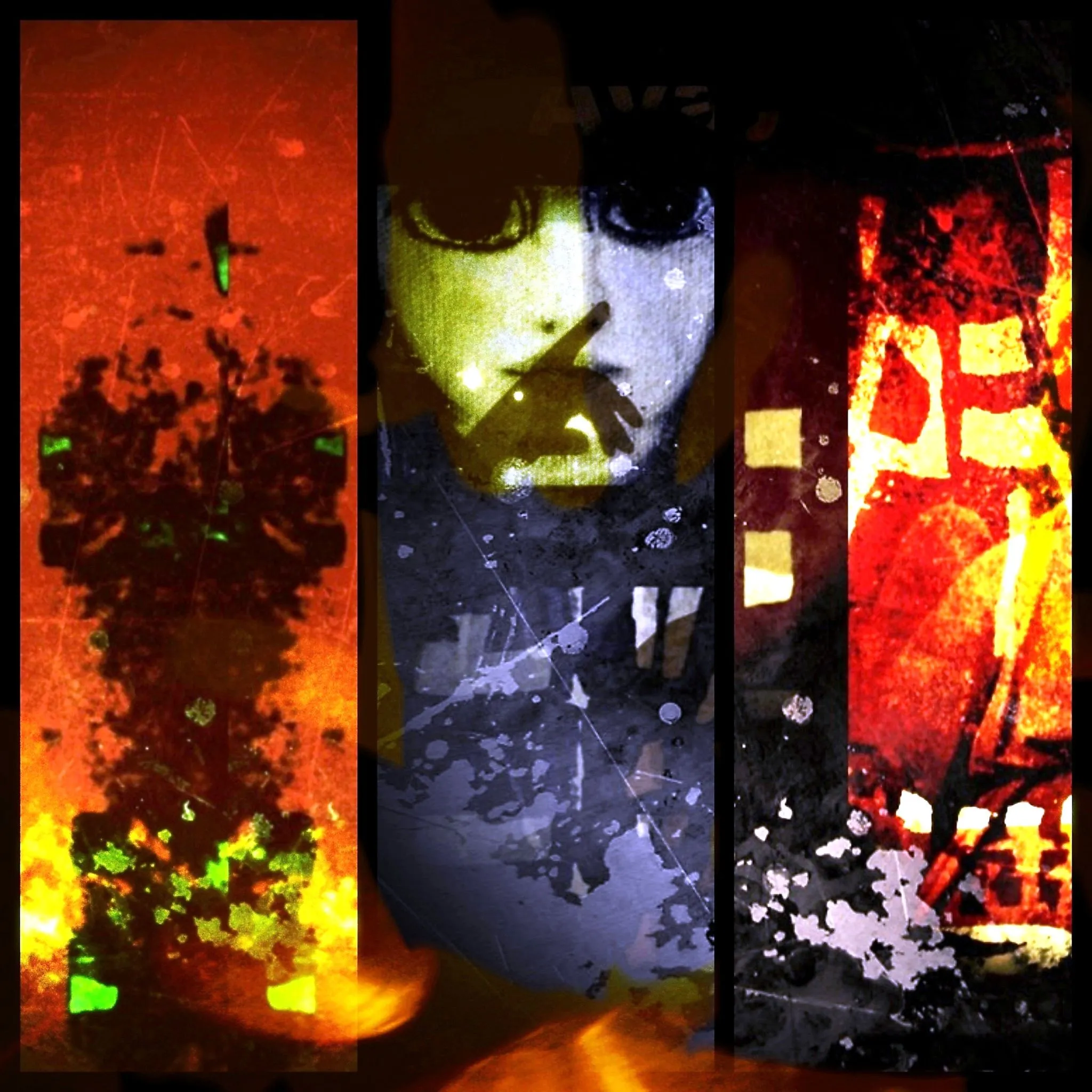Cowboys and Indians: Mum’s the Word

In Cowboys and Indians: Mum’s the Word, the artist explores the mythologizing of the American West and the silencing of Indigenous histories. A cowboy, a teepee, and a shushing figure become symbolic markers of how colonial narratives are taught, internalized, and passed down—often unchallenged.
In Cowboys and Indians: Mum’s the Word, the artist constructs a digitally manipulated triptych that interrogates the sanitized mythos of the American West and the erasure of Indigenous suffering. Through layered imagery and symbolic contrast, the work addresses the fictions taught to children, the silence surrounding historical violence, and the role of visual culture in perpetuating selective memory.
Each of the three vertical panels functions as a distinct but interconnected layer of narrative. On the left, a fiery red and black abstraction subtly resolves into the form of a cowboy—recognizable in its stance and hat-like silhouette. Glowing green and yellow highlights introduce an unsettling, radioactive edge, casting this archetypal figure not as heroic but as spectral, a ghost of propaganda. The symmetrical composition recalls inkblot tests, inviting viewers to reflect on what they’ve been conditioned to see: strength, order, masculinity—or conquest, spectacle, and distortion.
In the center, a pale, doll-like face stares out, finger to lips in the universal gesture for silence. This haunting figure serves as both witness and warning. It gestures toward the stories we are told as children—simple narratives where cowboys are valorized and “Indians” demonized. But it also evokes the institutionalized silencing of Indigenous history and trauma. The muted greens and blues of the panel add a funereal chill. Cracks, scratches, and visual debris amplify the sense of damage—not only to the image but to truth itself.
To the right, behind chaotic overlays of red and black, we see the form of a teepee, distorted but unmistakable. Framed like an artifact or a burning memory, the structure is swamped by abstracted blocks of white and shadow. It appears to dissolve into the visual noise—representing the near-total cultural annihilation of Indigenous ways of life under the guise of Western expansion. The red here bleeds across the surface, evoking both the fire of destruction and the aggression of erasure.
Together, the panels articulate a critique of how history is constructed, filtered, and commodified. The triptych format—reminiscent of religious altarpieces—ironically positions these subjects within a kind of sacred frame. But rather than offering clarity or redemption, the piece withholds closure. The cowboy and the teepee, both iconic symbols, are abstracted to the point of disintegration, while the central figure—mute and watchful—acts as both narrator and gatekeeper, refusing to speak.
The title reinforces this layered commentary. Cowboys and Indians references the binary role-playing of childhood games, a form of early indoctrination into colonial mythology. Mum’s the Word signals the conspiracy of silence around settler violence and forced assimilation, as well as the generational transmission of incomplete or sanitized narratives. What we don’t say—and what we’re taught not to say—becomes as potent as what we do.
Visually, the work mimics decay. Scratches, overlays, and color noise degrade the images, speaking to the degradation of memory and cultural authenticity. The digital medium is used not for clarity but for entropy, emphasizing that history is not only written but worn down, pixel by pixel, until what remains is only a fragment of the truth.
In a broader cultural context, the piece resonates with current debates around historical reckoning, cultural preservation, and the ethics of storytelling. It challenges the viewer to confront how easily myth can replace memory, and how silence—whether born of trauma or complicity—can be the most enduring legacy of all.
Cowboys and Indians: Mum’s the Word ultimately asks: what does it mean to inherit a story that omits its victims? And what responsibility do we bear in speaking up—or staying silent—when faced with the ruins of that story? In this work, the past is not behind us; it is pixelated, burning, and staring us dead in the eye.
Essay written: May 2025